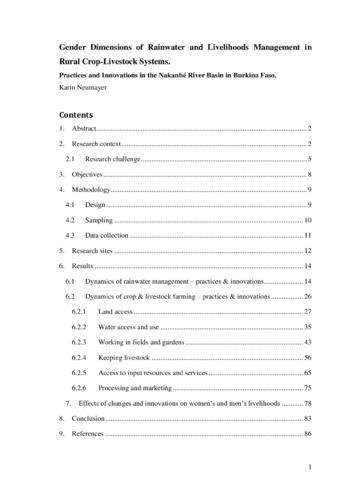Gender dimensions of rainwater and livelihoods management in rural crop-livestock systems:Practices and Innovations in the Nakanbé River Basin in Burkina Faso
Abstract
Environmental changes like increasingly variable rainfall patterns and degrading land resources crucially affect women’s and men’s livelihoods in rural crop-livestock systems in the Burkinabe Nakanbé basin. They are compounded by economic changes like increasingly dominant markets with rising prices for various agricultural products and livestock, and by social changes such as high population growth leading to increased competition over scarce land and water resources. The resulting vulnerability context affects local rural women’s and men’s livelihood strategies, implying various interdependent gender-differentiated opportunities and constraints for their practices in agriculture and livestock keeping.
This study analyses gender dynamics of practices in agricultural production, access to and use of land, water, knowledge, necessary input resources and markets, as well as respective innovations. Data was acquired by an empirical qualitative research in the context of the CGIAR Challenge Program on Water and Food and applied methods include semi-structured personal interviews, field observations and various participatory methods in the course of focus group discussions.
Results suggest that access to crop and garden land, control of harvest outcomes and access to financial capital are particularly determined by male inheritance rights, gender-differentiated household fields and men’s improved access to participation in development cooperation initiatives. Furthermore, opportunities to increase crop yields via access to material and immaterial input resources are constructed differently, while they are crucially necessary for men as well as women to fulfil their different societal roles and responsibilities. Especially access to physical capital including fertilizer, improved seed varieties, agricultural tools and livestock are important to provide for gender specific needs, households’ sustainment and would provide disadvantaged women with considerable empowerment potentials.

